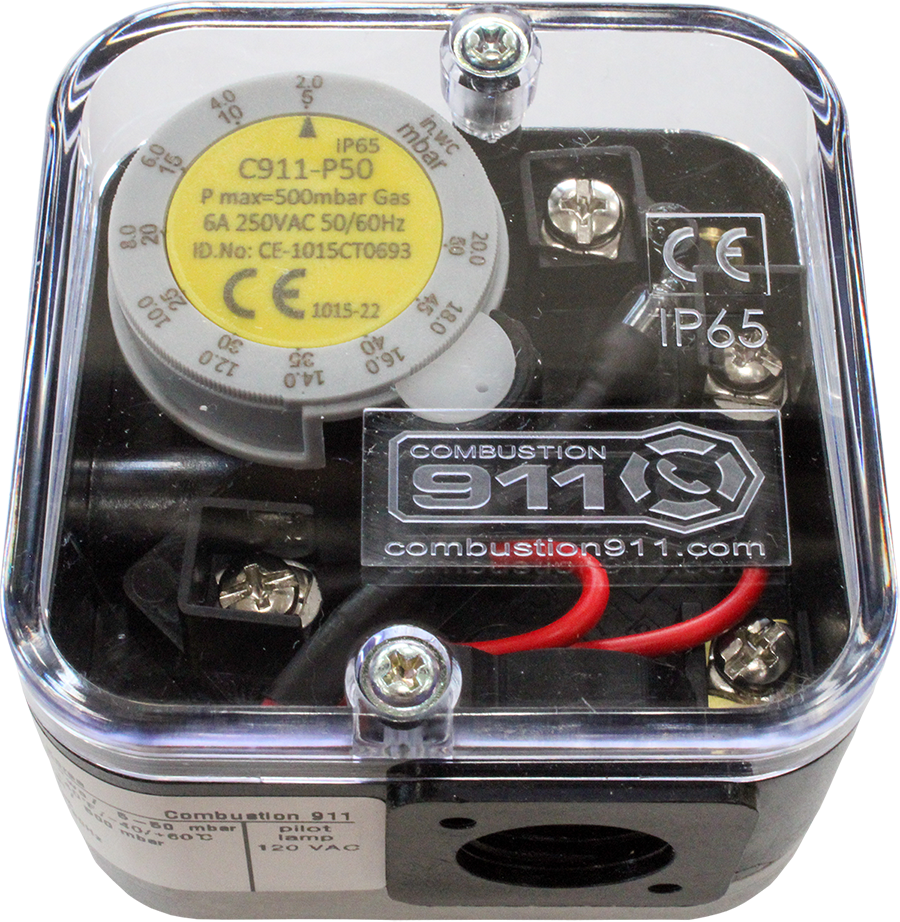Q: What is a pressure switch?
A: The purpose of a pressure switch in a combustion system is to keep the system from running or to shut the system down if pressure conditions are not within safe operating parameters.
How Pressure Switches Work
A pressure switch detects the presence of fluid pressure; in our case, that’s usually natural gas or air. Most pressure switches use a diaphragm as a detection element. These components are connected to one or more electrical contacts within the switch.
A pressure switch therefore is one that closes an electrical contact when a certain set fluid pressure has been reached on its input. The switch may be designed to make contact either on pressure rise or pressure fall.
A differential pressure switch is one which utilizes a differential air pressure to actuate an electric switch at a pre-set actuation point.
Pressure switches in combustion systems, such as the low gas pressure switch, the high gas pressure switch, and the combustion air pressure switch, are part of the safety chain. They are required by NFPA86. If a link in the safety chain is broken, the system is required to shut down.
The low gas pressure switch monitors minimum gas inlet pressure required for safe operation of the combustion system. If, prior to starting or during operation, the gas inlet pressure does not meet the minimum required for the system (as reflected in the set point of the pressure switch and noted on the combustion schematic), then the system is forced to shut down.
The high gas pressure switch monitors the maximum gas inlet pressure allowed for safe operation of the combustion system. If, prior to starting or during operation, the gas inlet pressure is higher than the maximum allowed for the system (as reflected in the set point of the pressure switch and noted on the combustion schematic), then the system is forced to shut down.
You might find additional pressure switches on the main gas train. If you are using tightness check to prove against leaks on your main blocking gas valves, there will be a pressure switch to help perform this check. If you have a valve in place to vent excess pressure from the gas train, you may have a pressure switch wired inline to automatically open that valve when a certain pressure is detected.
The combustion air pressure switch monitors the minimum air pressure required for safe operation of the combustion system. If, prior to starting or during operation, the air pressure does not meet this minimum (as reflected by the set point on the pressure switch and noted on the combustion schematic), the system is forced to shut down.
You may also find a purge air pressure switch on the air train. The purge air pressure switch is used to prove the required air pressure is present to purge the system. Purging is required to flush out any unused fuel before a fresh system start. The purge air pressure switch must be satisfied for the duration of the purge timer to complete a successful purge cycle.
Pressure Switch Types
- Positive pressure
- Negative pressure
- Differential pressure
- Automatic reset
- Manual reset
Please note, a pressure switch may have several of the above qualities.
Coming Soon!
Our own C911 pressure switches are coming soon. Watch this space for details once they are available!
For Automation
Please visit olstrad.com to learn more about our automation processes!












